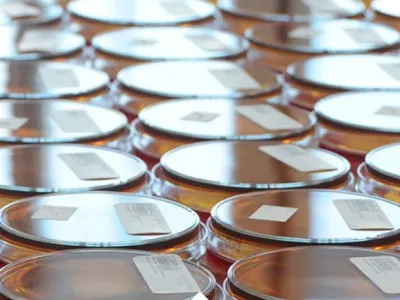A number of factors can affect the microbiological result of a sample submitted for analysis. One such factor that occurs from time to time is the presence of “Spreaders”.
What are spreaders?
Spreaders are naturally occurring colonies that grow across a plate, including over other bacterial colonies that are present. Spreaders are not contamination, but they can interfere with test results. Due to their ability to alter the growth and detection of other microorganisms on the plate, spreaders can unfortunately result in un-reportable tests.
It’s important for clients to understand the nature of spreaders and how they can disrupt samples, but also that it’s not the fault of the sampler or the laboratory undertaking the testing.

A Spreader may be only one colony, normally present in the sample, but which has happened to grow rapidly and can cover more than 25% of the agar plate. These instances are not indicative of a high count, but simply of a special type of colony that covers greater than 25% of the agar plate.
As a requirement of NATA accreditation, Symbio Laboratories is unable to report a valid result in an instance where a Spreader covers more than 25% of a plate. The reason it is not allowed to be termed a valid result is that target organisms may not have been allowed to grow and the true result is compromised.
“If >25% of the plate is covered by a Spreader then the result is not able to be reported, as the spreading organism may have inhibited or grown over other micro-organisms that may have been present.”
from Symbio Laboratories’ method “M0.05 Recording Results issue 4”
– Point 5.6 Reject plates where spreaders cover more than 25% of the plate.
Common Questions About Spreaders
How do spreaders affect different tests?
Some tests are less affected or not affected at all due to the type of growth media on the agar plate. As an example, Symbio Laboratories is able to still report a valid test result for Legionella but not for Heterotrophic Colony Counts (HCC), if a Spreader has grown over >25% because Legionella is grown on a “selective” media that inhibits the growth of microorganisms other than the target Legionella, whereas the HCC test is performed on a plate full of nutrients that facilitate the growth of as many microorganisms as possible in the sample.
Are spreaders due to unclean/ unsterilised testing facilities or poor staff handling?
Spreaders have nothing to do with contamination, and are simply a particular organism already present in the sample that grows and spreads to the point that it covers more than 25% of the surface. This is normal behaviour for microorganisms. Colonies naturally try to take over one another, and as a result in some developing survival strategies such as the production of antibiotics to “fight off” other species.
The samples I submitted are only hours old, how did this organism spread already?
Microorganisms that may result in Spreaders will already be present in the samples when they are provided. Once the plating of samples takes place, the colonies simply grow.
What should you do if you have a “Spr” (Spreader) result on a report?
Ultimately it depends on the importance of the given result but it is likely a new sample would need to be taken and re-submitted. It is uncertain as to whether the same Spreader organism would appear on a new sample.
Need Guidance with Test Results?
Contact Symbio today if you have any questions or concerns related to testing.
Over 5,900 companies trust Symbio Laboratories to provide the results they need to manage their food quality and safety. We have one of the broadest NATA scopes of any laboratory in Australia, experts at every level of the organisation, and the testing and analysis you need to get your product safely into the market.


